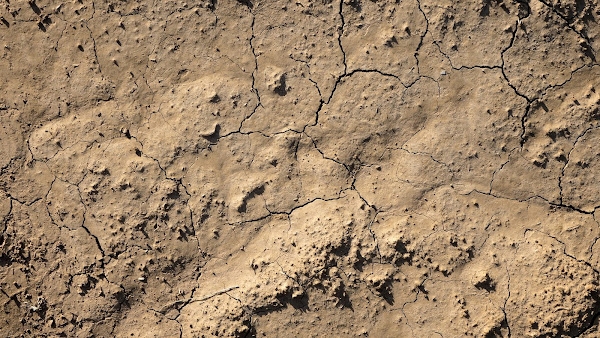Soil systems have been developed throughout millions of years, and a number of factors influence this soil system. Broadly these factors can be classified into two categories. These are - natural environmental factors, and human-induced factors. Basically there are five major factors of soil formation, i.e., Climate, Topography, Parent Material, Organisms, and Time. Moreover, human activities affect these fundamental factors - either as beneficial or as detrimental. So, it can be said that, soil characteristics is both the influence of natural and human activities.
The geographic features in an area are a function of natural processes and forces which either existed or occured throughout tens of million of years. While these nature-induced factors are influential in a particular location, then it is unlikely that human induced alteration will have occurred in that geographical area or environment. Human-caused seismic activities can be considered as an exception.
Soil is a part of nature, consists of layers which are formally known as 'soil horizons'. These layers are consists of lots of minerals which differs from its parent material in their structure, texture, colour, biology, chemical, and some other characteristics. Soil is the unconsolidated coverture of fine rock particles or Regolith that covers the 'solid geology' earth surface. Soil is the end product of the functioning of those five major fundamental factors.
From engineering viewpoint, soil is considered as the loose rock material or which is called Regolith, that lies above the 'solid geology' of the surface of the earth. On the other hand, from the viewpoint of Horticulture, soil can be defined as layer of earth surface that consists of organic matters that influences of has been influenced by the roots of plants and trees and may range in depth from centimetres to metres. So, it can be said that soil is a mixture of organic matters and minerals in the forms of solid, liquid or gases.
Why is the soil considered as a system?
Soil is the part of lithosphere or the solid geology of the earth where life thrives and soil forming processes take place simultaneously. The soil system may be considered as a dynamic ecosystem that has inputs, outputs, storages and flows. The total process goes through a proper functioning. Henceforth, soil can be considered as a system.
What kind of system is soil?
It is envisaged by soil scientists that soil is a three-state system, i.e., Solid, Liquid and Gases. Soil is the end product of factors like, climate, topography, parent material, organisms - interacting with each other over time.
How is soil a natural system?
Soil is a dynamic as well as diversified natural system which lie at the interface between lithosphere, air, water and life. Soil is considered as critical ecosystem service provider which helps to the sustenance of humanity.
Why soil is a dynamic system?
No doubt, soil hosts a diversified array of activities. Soil loosely hold onto plant nutrients through its electrostatic nature. Nutrients along with other ions constantly move between the soil surface and soil water. This frequent movement of nutrients and other ions makes it easily accessible for plant roots. This functioning always acts as a natural buffering system, which helps to prevent rapid changing of soil pH. Biological forces are also takes place within soil. Animals, plants, and numerous microorganisms contribute beneficial organic matters into the soil through their life cycle. Over the decomposition of organic matter, important nutrients are being released back into the soil system which allows plant to uptake that nutrients. Besides the replenishment of nutrients, this helps to develop enhanced soil structure and its ability to retain water. Therefore, soil can be considered truly as a dynamic system.
Is soil an open system?
Soil is an open system, and its functioning is determined by the interaction among its subsystems and the surrounding systems. (Dijkerman, 1974). The understanding of soil as an open system which allows substances to be added or removed, was first introduced by Jenny (1941). To him, soil is the result of the interactions between climate, organisms, rock matrix, landscape, and time duration of its formation. It is an inseparable part of many large systems comprising the upper portion of the lithosphere, lower portion of the atmosphere, and a considerable portion of the biosphere, and accordingly other substances can be added and removed from it. It can be said that, Soil is understood as an open system because of the flows of matter and energy that have an effect on its functioning and evolution throughout years.
Is soil is a living system?
Soil is often considered as a living system because soil comprised of varied living organisms in it, such as plants, animals and microorganisms (fungi, protozoa, and others). Presence of these organic substances denotes the robustness of soil. It consists of both biotic-living and once-living things.


Post a Comment
Please do not enter any spam link in the comment box